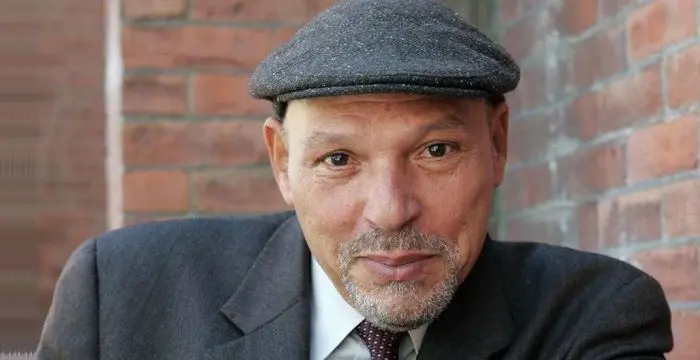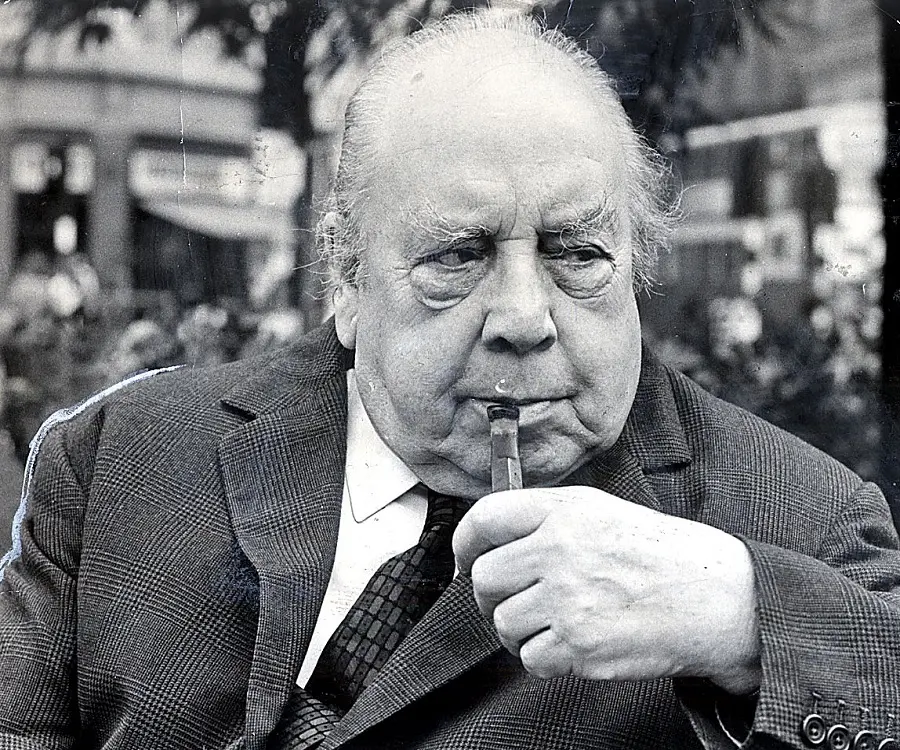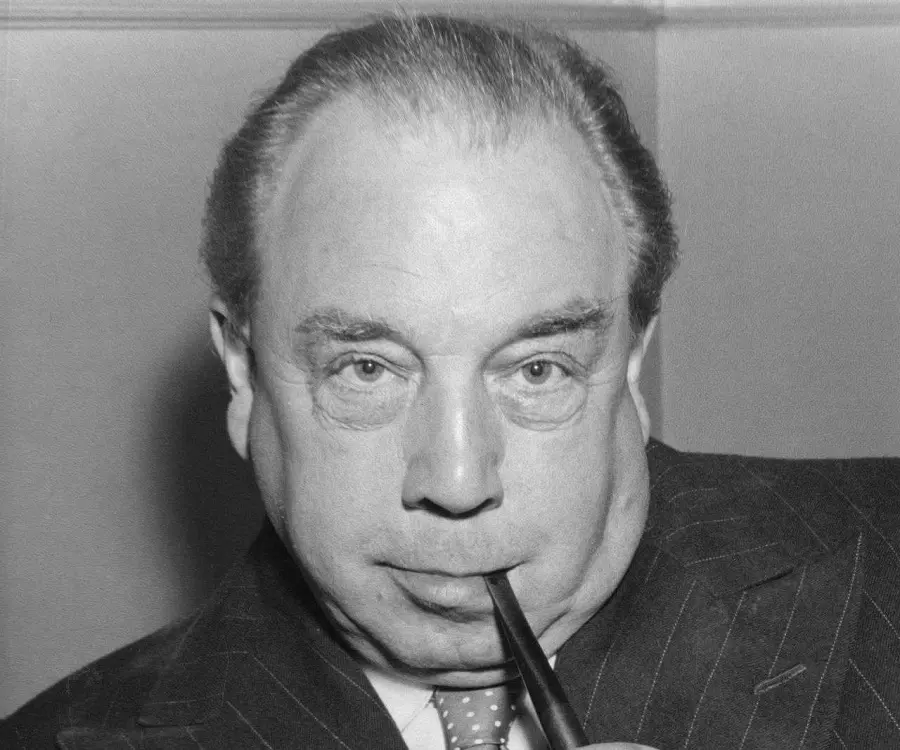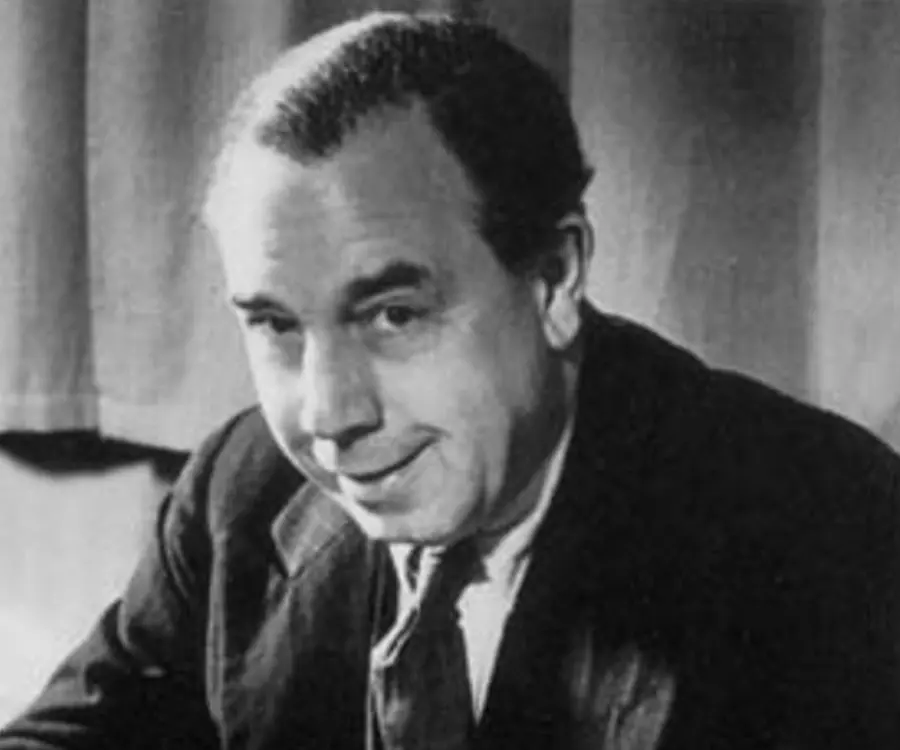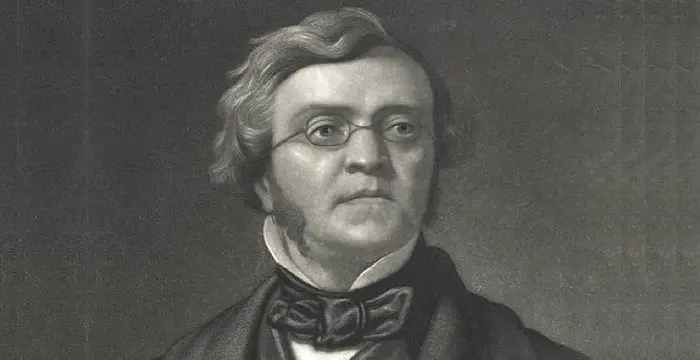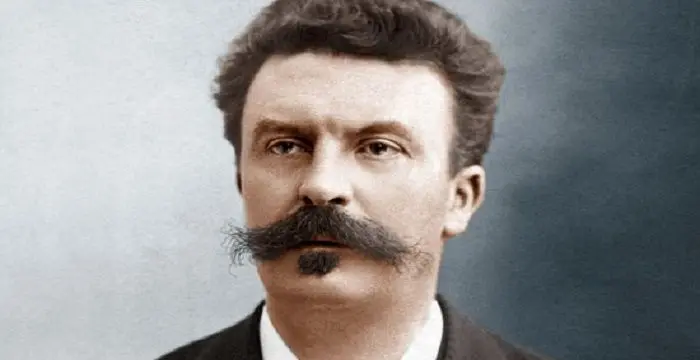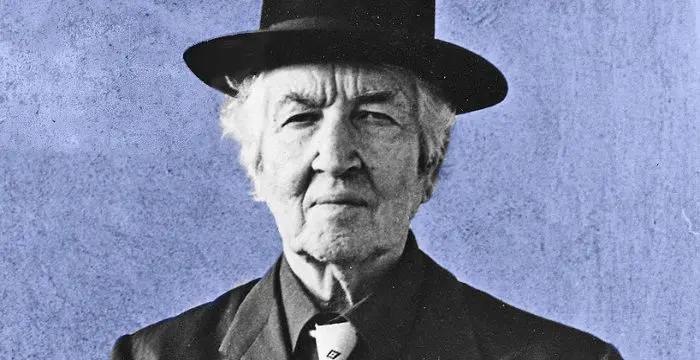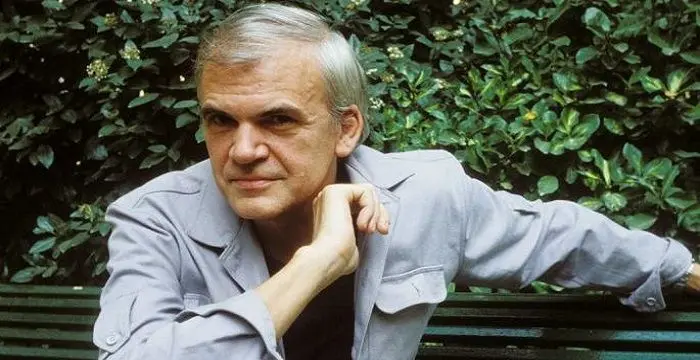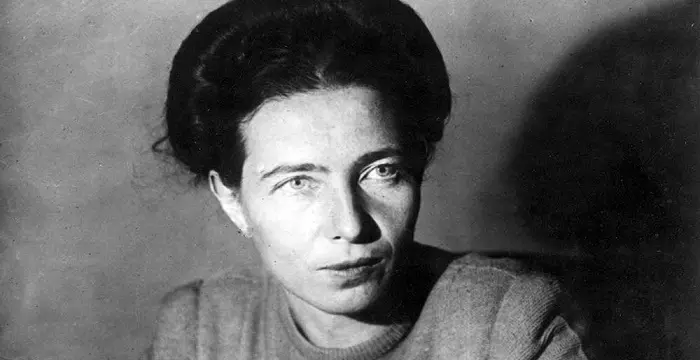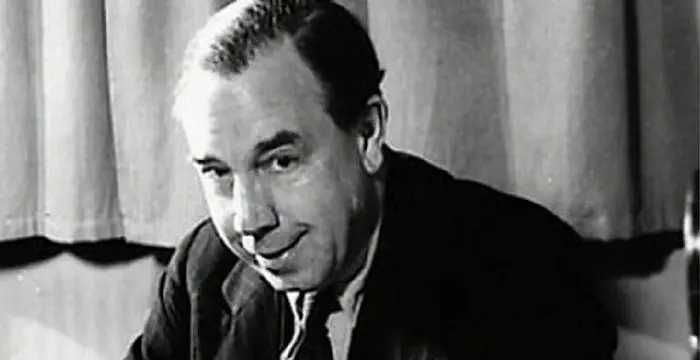
J. B. Priestley - Playwrights, Life Achievements and Personal Life
J. B. Priestley's Personal Details
J.B
| Information | Detail |
|---|---|
| Birthday | September 13, 1894 |
| Died on | August 14, 1984 |
| Nationality | British |
| Famous | Writers, Novelists, Playwrights, Novelists, Playwrights |
| Spouses | Emily, Jacquetta Hawkes (m. 1953–1984), Jane Wyndham-Lewis (m. 1926–1953) |
| Siblings | Tom Priestley |
| Known as | John Boynton Priestley |
| Childrens | Tom Priestley |
| Universities |
|
| Birth Place | Bradford, West Riding of Yorkshire, England |
| Political Ideology | Common Wealth Party,, Labour Party |
| Gender | Male |
| Sun Sign | Virgo |
| Born in | Bradford, West Riding of Yorkshire, England |
| Famous as | Novelist and Playwright |
| Died at Age | 89 |
// Famous Playwrights
Tennessee Williams
Tennessee Williams was one of the greatest playwrights of the 20th century. This biography of Tennessee Williams provides detailed information about his childhood, life, achievements, works and timeline.
August Wilson
August Wilson is a Pulitzer Prize winning play writer, who is known to have authored the ten play series, The Pittsburgh Cycle. Read this biography to learn more about his childhood, profile, life and timeline.
Robert Browning
Robert Browning was a famous English poet and playwright. Check out this biography to know about his childhood, family life, achievements and other facts about his life.
J. B. Priestley's photo
Who is J. B. Priestley?
J.B. Priestley was one of England’s most prolific writers, who led a very interesting life. He was a member of the last cohort of nonconformist writers who envisaged both science and philosophy in their large repertoire of works. Even though his name may have waned over time, his works are still looked up to by a number of free-thinking authors, essayists, scientists and philosophers today. In his long and successful career, he became renowned around the world as a playwright, critic and historian. He also made many contributions in the form of opera librettos, paintings, short stories and even as an actor, when one of the actors in one of his plays fell suddenly ill. In his earlier years, he would spend whatever little money he earned on buying books and tried his hand at different styles of writing. He also briefly volunteered for the army during World War I, after which he established a reputation as an amusing writer and critic. Some of his best-known works include ‘The Good Companions’, ‘Angel Pavement’ and ‘Let the People Sing’ and plays like ‘An Inspector Calls’, ‘Dangerous Corner’ and ‘Time and the Conways’.
// Famous Novelists
William Makepeace Thackeray
William Thackeray was an English novelist and satirist. Read this brief biography to find more on his life & timeline.
Guy de Maupassant
Guy de Maupassant was an acclaimed French short story writer and novelist. This biography provides detailed information about his childhood, life, career, achievements and timeline.
Robert Graves
Robert Graves was an English poet and novelist best known for his war memoir ‘Good-Bye to All That’. This biography of Robert Graves provides detailed information about his childhood, life, achievements, works & timeline.
Childhood & Early Life
John Boynton Priestley was born in a suburb of Bradford, England. When he was just two-years-old, his mother passed away and four years later, his father remarried.
He studied at Belle Vue Grammar School, but dropped out of the institution at the age of 16 so that he could work as a junior clerk at ‘Helm & Co.’, a wool firm. He worked at the firm from 1910 to 1914, during which he also began writing short articles and got them published in local newspapers.
Career
At the start of World War I, he enlisted in the army and served in the 10th Battalion, the Duke of Wellington’s Regiment. In 1916, he was severely wounded, experiences of which he wrote in ‘Margin Released’, his autobiography; which released much later.
After military service, he completed his university education at Trinity Hall, Cambridge and wrote his first novel, ‘Adam in Moonshine’, in 1927. This was followed by another novel next year titled, ‘Benighted’.
He achieved a breakthrough with the novel, ‘The Good Companions’ which he published in 1929. He earned the prestigious James Tait Black Memorial Prize award for the novel and it immediately catapulted him to national success. The same year, he collaborated with Hugh Walpole and wrote ‘Farthing Hall.
In 1930, he wrote the novel, ‘Angel Pavement’, which further cemented his place among the literary elite. Other fiction this year included ‘The Town Major of Miraucourt’.
In 1932, he published ‘Stamboul Train’ and ‘Faraway’. The same year, he collaborated with Gerald Bullett and published ‘I’ll Tell You Everything’. Apart from writing novels and fiction, he also wrote his first play, ‘Dangerous Corner’.
He wrote his second play, ‘Laburnum Grove’ in 1933 along with the novels, ‘Albert Goes Through’ and ‘Wonder Hero’. The next year proved to be an extremely fruitful one for him, and he published his first travelogue ‘English Journey’.
Between 1935 and 1938, he published the novels, ‘They Walk in the City’ and ‘The Doomsday Men’. He also wrote the plays, ‘Cornelius’, ‘Time and the Conways’, ‘I Have been Here Before’ and ‘When We Are Married’.
At the start of World War II, he became a regular broadcaster on the ‘Postscript’ which aired on BBC from 1940 to 1941. During this time, he chaired the 1941 Committee and the next year, he became a co-founder of the socialist ‘Common Wealth Party’.
His written works from 1942 to 1945 were limited to one publication a year. These include: ‘Blackout in Gretley’, ‘Daylight on Saturday’ and ‘Three Men in New Suits’. In 1946, he wrote one of his best-known plays, ‘An Inspector Calls’.
Other works during the 1940s include, ‘Bright Day’ (1946), ‘Jenny Villiers’ (1947) and ‘The Linden Tree’ (1947).
From 1950 onwards, his literary output started to decline and he produced only three novels including, ‘Festival at Farbridge’, ‘Low Notes on a High Level’ and ‘The Magicians’. He also wrote a collection of short stories titled, ‘The Other Place’ and was the writer and producer of the film, ‘Last Holiday’.
In 1958, he became an establishing member of the ‘Campaign for Nuclear Disarmament’. Two years later, he published ‘Literature and Western Man’, a 500 page review of Western prose in all its categories.
He wrote his autobiography, ‘Margin Released’ in 1962, which provides its readers with valuable insights into his work. The same year, he released the novel, ‘The Shapes of Sleep’.
In 1964, he published a comprehensive essay titled, ‘Man and Time’ and the novel, ‘Sir Michael and Sir George’. Four years later, he published, ‘The Image Men Vol. 1: Out of Town’ and ‘The Image Men Vol. 2: London End’.
Between 1975 and 1976, he authored ‘The Carfitt Crisis’ and ‘Found Lost Found’.
Major Works
In 1929, he published one of his best-known works, ‘The Good Companions’. The publication went on to receive a ‘James Tait Black Memorial Prize’ and was adapted twice for films. It became an instant hit as soon as it was published in Europe. Although it was not very well-regarded by critics, the readers loved the book and it also went to be adapted into a theatrical production in 1931.
Awards & Achievements
He was presented an honorary Doctor of Letters in 1970 by the University of Bradford.
In 1973, he was granted the ‘Freedom of the City’ honor by the city of Bradford.
He was awarded the Order of Merit in 1977.
Personal Life & Legacy
He married three times. He got married to Emily Tempest in 1921 and had two daughters with her. Emily died from cancer in 1925.
In 1926, he married Jane Wyndham-Lewis, with whom he had two daughters and a son.
In 1953, he divorced Jane Wyndham-Lewis and married the archaeologist and writer Jacquetta Hawkes.
He loved classical music for most part of his life and even composed a libretto titled ‘The Olympians’, which premiered in 1949.
In his later years, he suffered from depression and passed away in Statford-upon-Avon in Warwickshire, England at the age of 89.
After his death, a distinct collector’s edition of ‘Bright Day’ was issued in 2006, celebrating the 60th anniversary of the novel.
Trivia
This famous English writer, broadcaster and playwright of the ‘An Inspector Calls’ fame was known for always posing with and carrying his trademark pipe.
// Famous Novelists
Charles Bukowski
Charles Bukowski was a German-born American novelist, short story writer and poet. With this biography, learn in details about his childhood, life, works, career and timeline
Milan Kundera
Milan Kundera is a Czech-born French writer known for his erotic and political writings. This biography of Milan Kundera provides detailed information about his childhood, life, achievements, works & timeline.
Simone de Beauvoir
Simone de Beauvoir was an eminent French writer, intellectual, activist, and philosopher. This biography profiles her childhood, life, thoughts, achievements and timeline.
J. B. Priestley's awards
| Year | Name | Award |
|---|---|---|
Other | ||
| 0 | 1973 - Freedom of the City of Bradford | |
J. B. Priestley biography timelines
- // 1916At the start of World War I, he enlisted in the army and served in the 10th Battalion, the Duke of Wellington’s Regiment. In 1916, he was severely wounded, experiences of which he wrote in ‘Margin Released’, his autobiography; which released much later.
- // 1921 To 1925He married three times. He got married to Emily Tempest in 1921 and had two daughters with her. Emily died from cancer in 1925.
- // 1926In 1926, he married Jane Wyndham-Lewis, with whom he had two daughters and a son.
- // 1927After military service, he completed his university education at Trinity Hall, Cambridge and wrote his first novel, ‘Adam in Moonshine’, in 1927. This was followed by another novel next year titled, ‘Benighted’.
- // 1929In 1929, he published one of his best-known works, ‘The Good Companions’. The publication went on to receive a ‘James Tait Black Memorial Prize’ and was adapted twice for films. It became an instant hit as soon as it was published in Europe. Although it was not very well-regarded by critics, the readers loved the book and it also went to be adapted into a theatrical production in 1931.
- // 1930In 1930, he wrote the novel, ‘Angel Pavement’, which further cemented his place among the literary elite. Other fiction this year included ‘The Town Major of Miraucourt’.
- // 1932In 1932, he published ‘Stamboul Train’ and ‘Faraway’. The same year, he collaborated with Gerald Bullett and published ‘I’ll Tell You Everything’. Apart from writing novels and fiction, he also wrote his first play, ‘Dangerous Corner’.
- // 1933He wrote his second play, ‘Laburnum Grove’ in 1933 along with the novels, ‘Albert Goes Through’ and ‘Wonder Hero’. The next year proved to be an extremely fruitful one for him, and he published his first travelogue ‘English Journey’.
- // 1935 To 1938Between 1935 and 1938, he published the novels, ‘They Walk in the City’ and ‘The Doomsday Men’. He also wrote the plays, ‘Cornelius’, ‘Time and the Conways’, ‘I Have been Here Before’ and ‘When We Are Married’.
- // 1940 To 1941At the start of World War II, he became a regular broadcaster on the ‘Postscript’ which aired on BBC from 1940 to 1941. During this time, he chaired the 1941 Committee and the next year, he became a co-founder of the socialist ‘Common Wealth Party’.
- // 1942 To 1945His written works from 1942 to 1945 were limited to one publication a year. These include: ‘Blackout in Gretley’, ‘Daylight on Saturday’ and ‘Three Men in New Suits’. In 1946, he wrote one of his best-known plays, ‘An Inspector Calls’.
- // 1953In 1953, he divorced Jane Wyndham-Lewis and married the archaeologist and writer Jacquetta Hawkes.
- // 1958In 1958, he became an establishing member of the ‘Campaign for Nuclear Disarmament’. Two years later, he published ‘Literature and Western Man’, a 500 page review of Western prose in all its categories.
- // 1962He wrote his autobiography, ‘Margin Released’ in 1962, which provides its readers with valuable insights into his work. The same year, he released the novel, ‘The Shapes of Sleep’.
- // 1964In 1964, he published a comprehensive essay titled, ‘Man and Time’ and the novel, ‘Sir Michael and Sir George’. Four years later, he published, ‘The Image Men Vol. 1: Out of Town’ and ‘The Image Men Vol. 2: London End’.
- // 1970He was presented an honorary Doctor of Letters in 1970 by the University of Bradford.
- // 1973In 1973, he was granted the ‘Freedom of the City’ honor by the city of Bradford.
- // 1975 To 1976Between 1975 and 1976, he authored ‘The Carfitt Crisis’ and ‘Found Lost Found’.
- // 1977He was awarded the Order of Merit in 1977.
// Famous Writers
Joyce Meyer
Joyce Meyer is a Christian author and speaker. This biography provides detailed information about her childhood, life, achievements, works & timeline
Temple Grandin
Temple Grandin is a well-known American writer, autistic activist and animal expert. This biography profiles her childhood, life, achievements, career and timeline
Tennessee Williams
Tennessee Williams was one of the greatest playwrights of the 20th century. This biography of Tennessee Williams provides detailed information about his childhood, life, achievements, works and timeline.
Charles Bukowski
Charles Bukowski was a German-born American novelist, short story writer and poet. With this biography, learn in details about his childhood, life, works, career and timeline
Susan Sontag
Susan Sontag is an American critical essayist, cultural analyst, novelist, political activist, filmmaker and playwright of international repute. Read on to find out more about her childhood, career, profile and timeline.
Suze Orman
Suze Orman is an American television host, financial advisor, author and motivational speaker, famous for her ‘The Suze Orman Show’ on CNBC. This biography profiles her childhood, life, career, works, achievements and timeline.
J. B. Priestley's FAQ
What is J. B. Priestley birthday?
J. B. Priestley was born at 1894-09-13
When was J. B. Priestley died?
J. B. Priestley was died at 1984-08-14
Where was J. B. Priestley died?
J. B. Priestley was died in Stratford-upon-Avon, Warwickshire, England
Which age was J. B. Priestley died?
J. B. Priestley was died at age 89
Where is J. B. Priestley's birth place?
J. B. Priestley was born in Bradford, West Riding of Yorkshire, England
What is J. B. Priestley nationalities?
J. B. Priestley's nationalities is British
Who is J. B. Priestley spouses?
J. B. Priestley's spouses is Emily, Jacquetta Hawkes (m. 1953–1984), Jane Wyndham-Lewis (m. 1926–1953)
Who is J. B. Priestley siblings?
J. B. Priestley's siblings is Tom Priestley
Who is J. B. Priestley childrens?
J. B. Priestley's childrens is Tom Priestley
What was J. B. Priestley universities?
J. B. Priestley studied at Belle Vue Grammar School, Trinity Hall, Cambridge
What is J. B. Priestley's political ideology?
J. B. Priestley's political ideology is Common Wealth Party,, Labour Party
What is J. B. Priestley's sun sign?
J. B. Priestley is Virgo
How famous is J. B. Priestley?
J. B. Priestley is famouse as Novelist and Playwright

